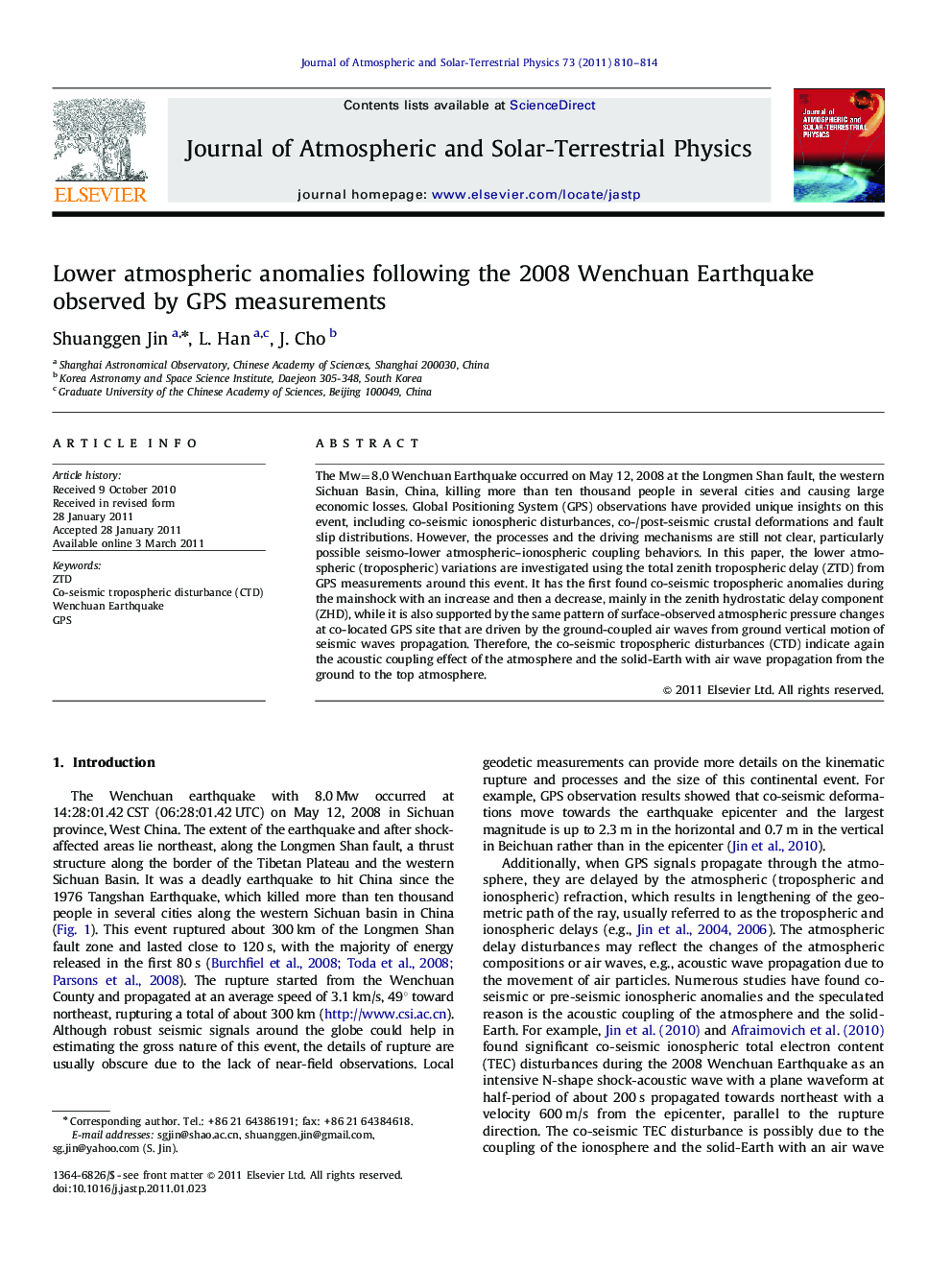| Article ID | Journal | Published Year | Pages | File Type |
|---|---|---|---|---|
| 1777182 | Journal of Atmospheric and Solar-Terrestrial Physics | 2011 | 5 Pages |
The Mw=8.0 Wenchuan Earthquake occurred on May 12, 2008 at the Longmen Shan fault, the western Sichuan Basin, China, killing more than ten thousand people in several cities and causing large economic losses. Global Positioning System (GPS) observations have provided unique insights on this event, including co-seismic ionospheric disturbances, co-/post-seismic crustal deformations and fault slip distributions. However, the processes and the driving mechanisms are still not clear, particularly possible seismo-lower atmospheric–ionospheric coupling behaviors. In this paper, the lower atmospheric (tropospheric) variations are investigated using the total zenith tropospheric delay (ZTD) from GPS measurements around this event. It has the first found co-seismic tropospheric anomalies during the mainshock with an increase and then a decrease, mainly in the zenith hydrostatic delay component (ZHD), while it is also supported by the same pattern of surface-observed atmospheric pressure changes at co-located GPS site that are driven by the ground-coupled air waves from ground vertical motion of seismic waves propagation. Therefore, the co-seismic tropospheric disturbances (CTD) indicate again the acoustic coupling effect of the atmosphere and the solid-Earth with air wave propagation from the ground to the top atmosphere.
► We checked the lower atmospheric variations from GPS measurements during the 2008 Wenchuan Earthquake. ► Co-seismic tropospheric anomalies during the mainshock have been found for the first time, mainly in the zenith hydrostatic delay component (ZHD). ► Same patterns of surface atmospheric pressure changes at co-located GPS site are also observed.
